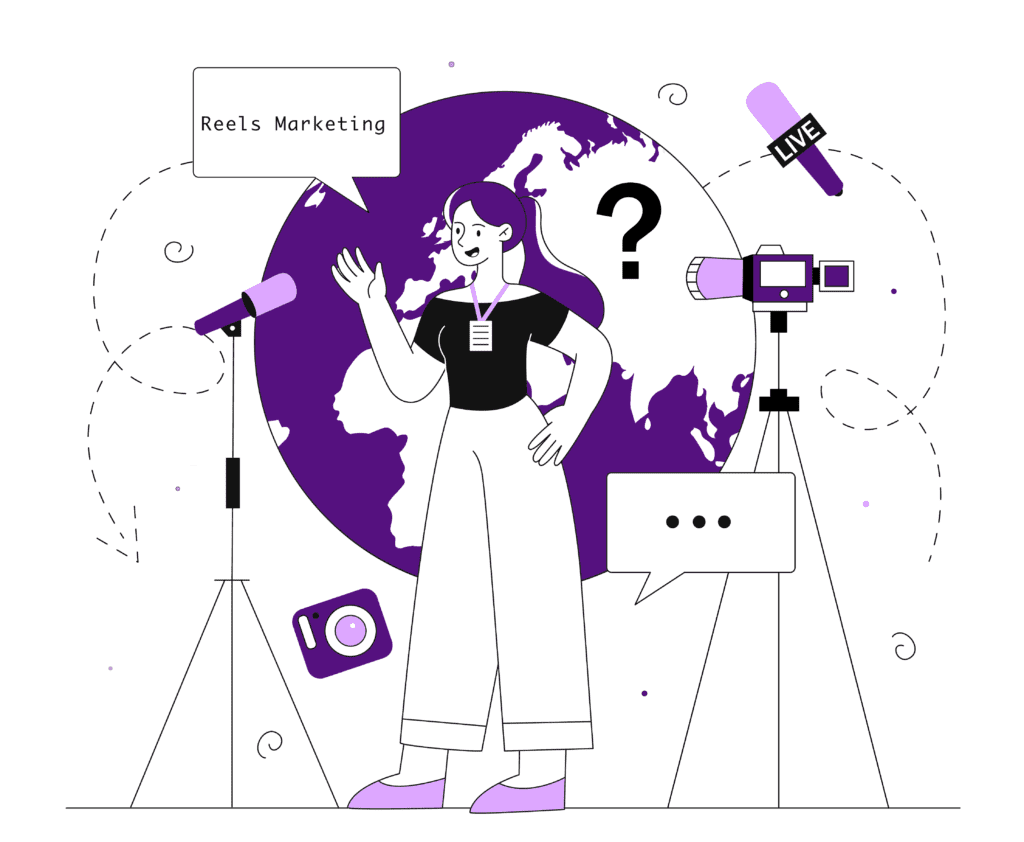1. Choose the Name for Your Software Company
The first step to starting your own software company is to choose your business’ name.
This is a very important choice since your company name is your brand and will last for the lifetime of your business. Ideally you choose a name that is meaningful and memorable. Here are some tips for choosing a name for your software company:
- Make sure the name is available. Check your desired name against trademark databases and your state’s list of registered business names to see if it’s available. Also check
to see if a suitable domain name is available. - Keep it simple. The best names are usually ones that are easy to remember, pronounce and spell.
- Think about marketing. Come up with a name that reflects the desired brand and/or focus of your software company.
2. Develop Your Software Company Business Plan
One of the most important steps in starting a software company is to develop your business plan. The process of creating your plan ensures that you fully understand your market and your software business strategy. The plan also provides you with a roadmap to follow and if needed, to present to funding sources to raise capital for your business.
Your business plan should include the following sections:
- Executive Summary – this section should summarize your entire business plan so readers can quickly understand the key details of your software company.
- Company Overview – this section tells the reader about the history of your software company and what type of software company you operate. For example, are you an enterprise
software company or a software as a service company? - Industry Analysis – here you will document key information about the software industry. Conduct market research and document how big the industry is and what trends are
affecting it. - Customer Analysis – in this section, you will document who your ideal or target customers are and their demographics. For example, do they have a specific job title or
work in a particular industry? - Competitive Analysis – here you will document the key direct and indirect competitors you will face and how you will build competitive advantage.
- Marketing Plan – your marketing plan should address the 4Ps: Product, Price, Promotions and Place.
- Product: Determine and document what products/services you will offer
- Prices: Document the prices of your products/services
- Place: Where will your business be located and how will that location help you increase sales?
- Promotions: What promotional methods will you use to attract customers to your software company? For example, you might decide to use pay-per-click advertising, public
relations, search engine optimization and/or social media marketing.
- Operations Plan – here you will determine the key processes you will need to run your business operations. You will also determine your staffing needs. Finally, in this
section of your plan, you will create a projected growth timeline showing the milestones you hope to achieve in the coming years. - Management Team – this section details the background of your company’s management team.
- Financial Plan – finally, the financial plan answers questions including the following:
- What startup costs will you incur?
- How will your software company make money?
- What are your projected sales and expenses for the next five years?
- Do you need to raise funding to launch your business?
3. Choose the Legal Structure for Your Software Company
Next you need to choose a legal structure for your software company and register it and your business name with the Secretary of State in each state where you operate your software business.
Below are the five most common legal structures:
1) Sole Proprietorship
A sole proprietorship is a business entity in which the owner of the software company and the business are the same legal person. The owner of a sole proprietorship is responsible for all debts and obligations of the business. There are no formalities required to establish a sole proprietorship, and it is easy to set up and operate. The main advantage of a sole proprietorship is that it is simple and inexpensive to establish. The main disadvantage is that the owner is liable for all debts and obligations of the business.
2) Partnerships
A partnership is a legal structure that is popular among small businesses. It is an agreement between two or more people who want to start a software company together. The partners share in the profits and losses of the business.
The advantages of a partnership are that it is easy to set up, and the partners share in the profits and losses of the business. The disadvantages of a partnership are that the partners are jointly liable for the debts of the business, and disagreements between partners can be difficult to resolve.
3) Limited Liability Company (LLC)
A limited liability company, or LLC, is a type of business entity that provides limited liability to its owners. This means that the owners of an LLC are not personally responsible for the debts and liabilities of the business. The advantages of an LLC for a software company include flexibility in management, pass-through taxation (avoids double taxation as explained below), and limited personal liability. The disadvantages of an LLC include lack of availability in some states and self-employment taxes.
4) C Corporation
A C Corporation is a business entity that is separate from its owners. It has its own tax ID and can have shareholders. The main advantage of a C Corporation for a software company is that it offers limited liability to its owners. This means that the owners are not personally responsible for the debts and liabilities of the business. The disadvantage is that C Corporations are subject to double taxation. This means that the corporation pays taxes on its profits, and the shareholders also pay taxes on their dividends.
5) S Corporation
An S Corporation is a type of corporation that provides its owners with limited liability protection and allows them to pass their business income through to their personal income tax returns, thus avoiding double taxation. There are several limitations on S Corporations including the number of shareholders they can have among others.
Once you register your software company, your state will send you your official “Articles of Incorporation.” You will need this among other documentation when establishing your banking account (see below). We recommend that you consult an attorney in determining which legal structure is best suited for your company.
4. Secure Startup Funding for Your Software Company (If Needed)
In developing your software company business plan, you might have determined that you need to raise funding to launch your business.
If so, the main sources of funding for a software business to consider are venture capital funds, personal savings, family and friends, credit card financing, bank loans, crowdfunding and angel investors. Angel investors are individuals who provide capital to early-stage businesses. Angel investors typically will invest in a software company that they believe has high potential for growth.
5. Secure a Location for Your Business
You have some flexibility in deciding whether you want to secure an office space for your software company, build a remote team, or a combination of the two.
If you choose to buy or rent a physical location, consider:
- Driving around to find the right areas while looking for “for lease” signs
- Contacting a commercial real estate agent
- Doing commercial real estate searches online
- Telling others about your needs and seeing if someone in your network has a connection that can help you find the right space
6. Register Your Software Company With the IRS
Next, you need to register your business with the Internal Revenue Service (IRS) which will result in the IRS issuing you an Employer Identification Number (EIN).
Most banks will require you to have an EIN in order to open up an account. In addition, in order to hire employees, you will need an EIN since that is how the IRS tracks your payroll tax payments.
Note that if you are a sole proprietor without employees, you generally do not need to get an EIN. Rather, you would use your social security number (instead of your EIN) as your taxpayer identification number.
7. Open a Business Bank Account
It is important to establish a bank account in your software company’s name. This process is fairly simple and involves the following steps:
- Identify and contact the bank you want to use
- Gather and present the required documents (generally include your company’s Articles of Incorporation, driver’s license or passport, and proof of address)
- Complete the bank’s application form and provide all relevant information
- Meet with a banker to discuss your business needs and establish a relationship with them
8. Get a Business Credit Card
You should get a business credit card for your software company to help you separate personal and business expenses.
You can either apply for a business credit card through your bank or apply for one through a credit card company.
When you’re applying for a business credit card, you’ll need to provide some information about your business. This includes the name of your business, the address of your business, and the type of business you’re running. You’ll also need to provide some information about yourself, including your name, Social Security number, and date of birth.
Once you’ve been approved for a business credit card, you’ll be able to use it to make purchases for your business. You can also use it to build your credit history which could be very important in securing loans and getting credit lines for your business in the future.
9. Get the Required Business Licenses and Permits
Every state, county and city has different business license and permit requirements.
Nearly all states, counties and/or cities have license requirements including:
- General Business License – A business license is typically required to operate a business in a particular state. The requirements and fees for a business license vary by state, so it is important to research the requirements in your state. Some common requirements for a business license include having a registered name for your company and filing articles of incorporation.
- Sales Tax License – A sales tax license is typically required to collect and remit sales tax in a particular state. The requirements and fees for a sales tax license vary by state, so it is important to research the requirements in your state. Some common requirements for a sales tax license include registering with the state department of revenue and applying for a seller’s permit.
Depending on where you launch your software company, you will have to obtain the necessary state, county and/or city licenses.
10. Get Business Insurance for Your Software Company
Some common types of insurance to consider include:
- General Liability Insurance – General liability insurance is a type of insurance that provides coverage for a business in the event that it is sued for negligence or other wrongful acts. This type of insurance can help protect a software company from lawsuits related to product liability, property damage, or personal injury.
- Errors and Omissions Insurance – Errors and omissions insurance, also known as professional liability insurance, is a type of insurance that provides coverage for a business in the event that it is sued for negligence or other wrongful acts. This type of insurance can help protect a software company from lawsuits related to software development, consulting, or other professional services.
- Product Liability Insurance – Product liability insurance is a type of insurance that provides coverage for a business in the event that its products cause harm to consumers. This type of insurance can help protect a software company from lawsuits related to product defects, design flaws, or improper instructions.
- Workers’ Compensation Insurance – Workers’ compensation insurance is a type of insurance that provides coverage for a business in the event that an employee is injured while working. This type of insurance can help protect a software company from lawsuits related to workplace accidents.
Find an insurance agent, tell them about your business and its needs, and they will recommend policies that fit those needs.
11. Buy or Lease the Right Software Company Business Equipment
To start, a software company really only needs reliable computers and basic office supplies. If you are opening a physical location for your software company, you might also need desks and other office furniture for your team, as well as reception furniture. If you plan to do many virtual meetings, be sure to invest in a decent webcam.
12. Develop Your Software Company Marketing Materials
Marketing materials will be required to attract and retain customers to your software company.
The key marketing materials you will need are as follows:
-
- Logo – Spend some time developing a good logo for your software company. Your logo will be printed on company stationery, business cards, marketing materials, and may even be seen when users load your products. The right logo can increase customer trust and awareness of your brand.
-
- Website – Likewise, a professional software company website provides potential customers with information about the products and/or services you offer, your company’s history, and contact information. Importantly, remember that the look and feel of your website will affect how your target market perceives you.
- Social Media Accounts – Establish social media accounts in your company’s name. Accounts on Facebook, Twitter, LinkedIn and/or other social media networks will help customers and others find and interact with your software company.
13. Purchase and Setup the Software Needed to Run Your Software Company
Your team will need a good software development platform. This can be something like Microsoft Visual Studio, Eclipse, or Xcode. The company also needs a good source code control system, like Git or Subversion. Finally, the company will need some good software development tools, like a compiler, an editor, and a debugger.
Slack is another popular tool among software development teams that allows members to keep in touch and help to build workplace morale among virtual workers. You should also explore bookkeeping and payroll software.
★★★★★ Fresh Books
★★★★★ Zar Money
14. Start Building Your Team
Your team should be composed of individuals with the necessary skills and experience to help you build your product and grow your company. When assembling your team, it’s important to find people who share your vision and are passionate about your product.
It is a good idea to hire at least one product manager who can be responsible for creating and managing your product roadmap, defining product features, and coordinating development efforts
Any software development business relies on having a strong development team. You will need software engineers to actually design, build, and maintain the products you create. Likewise, your should plan on hiring sales and marketing team members to spread awareness about your products and make sales.
15. Open for Business
You are now ready to open your software company. If you followed the steps above, you should be in a great position to build a successful business. Below are answers to frequently asked questions that might further help you.









Comments